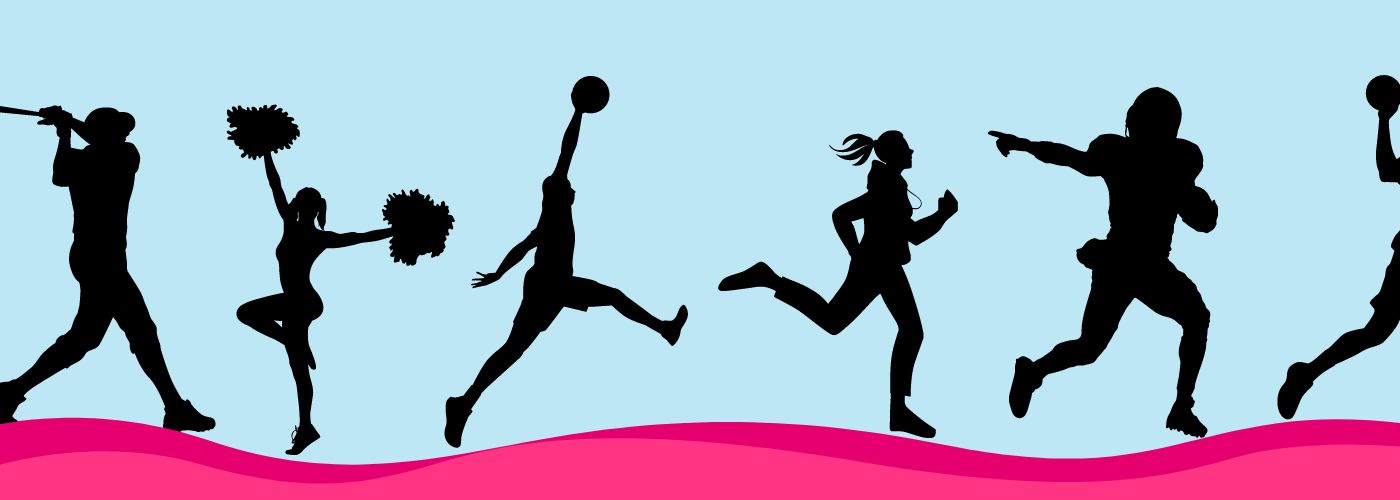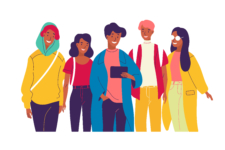Accessibility for Higher Education Athletics
Updated: August 21, 2023
Learn about FCC requirements for the captioning of online video [FREE GUIDE]
If you’ve attended a college or university in the United States with a sports team, you probably know just how big sports culture is. Pre-game festivities typically take place in a parking lot outside of a sports stadium and are filled with excited students and nostalgic alumni. Both wins and losses can be extremely emotional, and attending games is an integral part of the college experience for students nationwide.
There’s no denying the popularity of higher education athletics. According to the National Football Foundation, 163 million people watched college football games in the 2018-2019 season—and that’s just football. That doesn’t include other popular sports like basketball, soccer, and hockey.
The excitement isn’t limited to the games themselves. Through the power of video, college teams are able to keep the momentum going before and after games.
In addition to watching games live, college sports fans are engaging with other video content produced by higher education athletics departments including game highlight videos, student-athlete highlights, upcoming game projections, and more. If this content isn’t captioned, it becomes inaccessible to the millions of D/deaf and hard of hearing viewers who consume this content.
Video accessibility for higher education athletics has many benefits. By making this content accessible, not only do you increase accessibility, but you also boost your SEO and vastly improve the user experience.
Taking Higher Ed Athletics Video Content to the Next Level
User Engagement
Live captions are extremely important for your college sports viewers; every fan deserves to have access to the game. If you’re in a loud college bar, live captions help you follow along despite your noisy environment. Live captions help engage viewers whether or not they have hearing loss.
The same goes for recorded college sports videos. Captions make the user experience that much better: 80% of people who watch video with closed captions on aren’t D/deaf or hard of hearing.
Because of the widespread popularity of smartphones and tablets, sports fans can watch videos in all sorts of environments. Some of these places can be very loud or quiet, making engaging with your favorite content difficult. When headphones aren’t available in sound-sensitive environments, captions allow you to understand what’s being said in a video. Prioritizing video accessibility for higher education athletics allows fans to engage with your content anywhere and everywhere.
Search Engine Optimization (SEO)
Google is the most popular search engine on the web, with at least 8.5 billion searches a day. This means it can be extremely difficult to achieve a high ranking for a given search query.
A good SEO strategy is not about trying to attract everyone to your video. It’s about finding the right viewers who are genuinely interested in your content. The best way to do that is to make sure your videos are seen by the right viewers.
Videos with captions had a 13.48% increase in views the first 14 days of being published.
Captions improve SEO because of the text that’s associated with captions. Search engines can’t watch a video, but they certainly understand text. When you caption your videos, it’s more likely to rank higher on search engine result pages (SERPs) for relevant keywords.
A study by Discovery Digital Networks found that videos with captions had a 13.48% increase in views the first 14 days of being published. The same study found that captioned videos enjoyed 7.32% more views on average. Caption your videos to attract even more sports fans!
Are you FCC compliant? Find out now! [FREE GUIDE]
Accessibility and Legal Compliance
According to the World Health Organization, 430 million people worldwide have some form of hearing loss. With the increase in life expectancy, that number is rising.
Captions make your content accessible to students, alumni, and other fans that want to keep up with the latest in sports at your university. Inaccessible video excludes an entire population of avid fans. They want to engage with your video, but without captions, they wouldn’t be able to understand any auditory information.
Federal laws in the United States, like the Federal Communications Commission (FCC), 21st Century Communications and Video Accessibility Act (CVAA), and Americans with Disabilities Act (ADA), require sports broadcasters to make their videos accessible. Sports videos must be live captioned when broadcast on television and captioned when published online. In addition, any clips and montages must also be captioned.
Video accessibility for higher education athletics is in your best interest, whether your video is live or recorded. Making your content accessible will help you avoid lawsuits and improve your SEO and audience engagement.
Get started with captions for sports events and make your content accessible for all.
This post was originally published in August 2019 by Elisa Lewis and has been updated for freshness, accuracy, and comprehensiveness.
Further Reading

Subscribe to the Blog Digest
Sign up to receive our blog digest and other information on this topic. You can unsubscribe anytime.
By subscribing you agree to our privacy policy.





